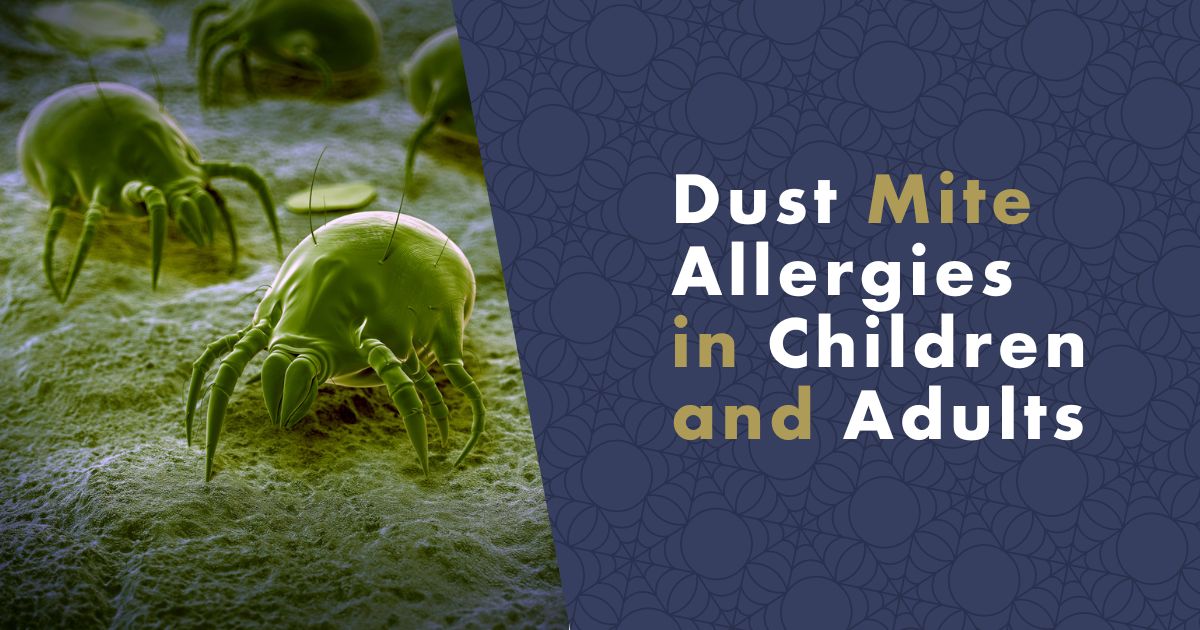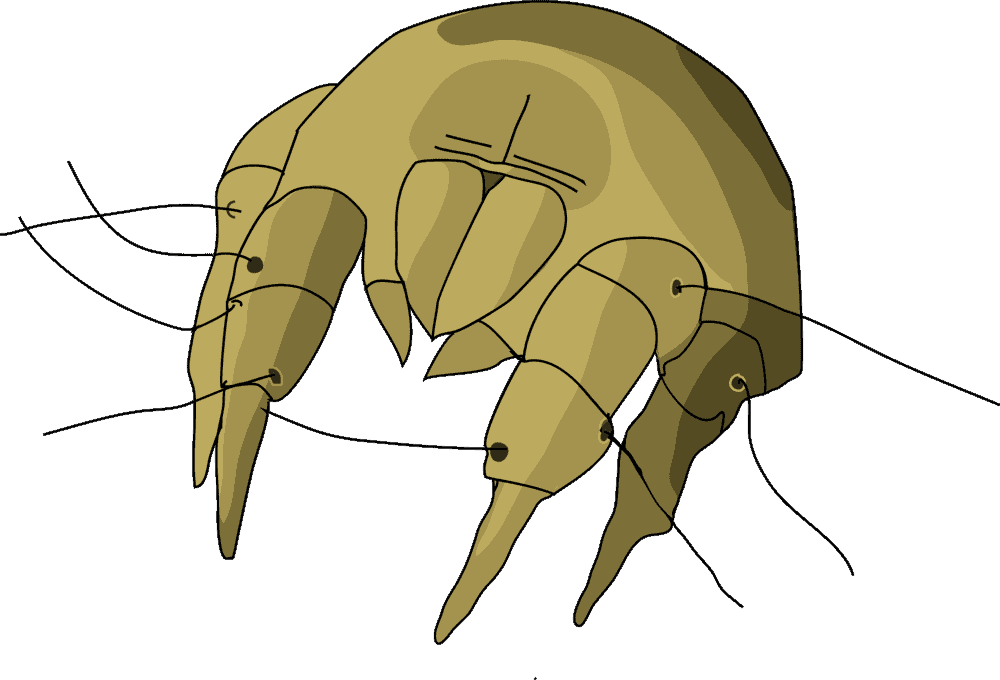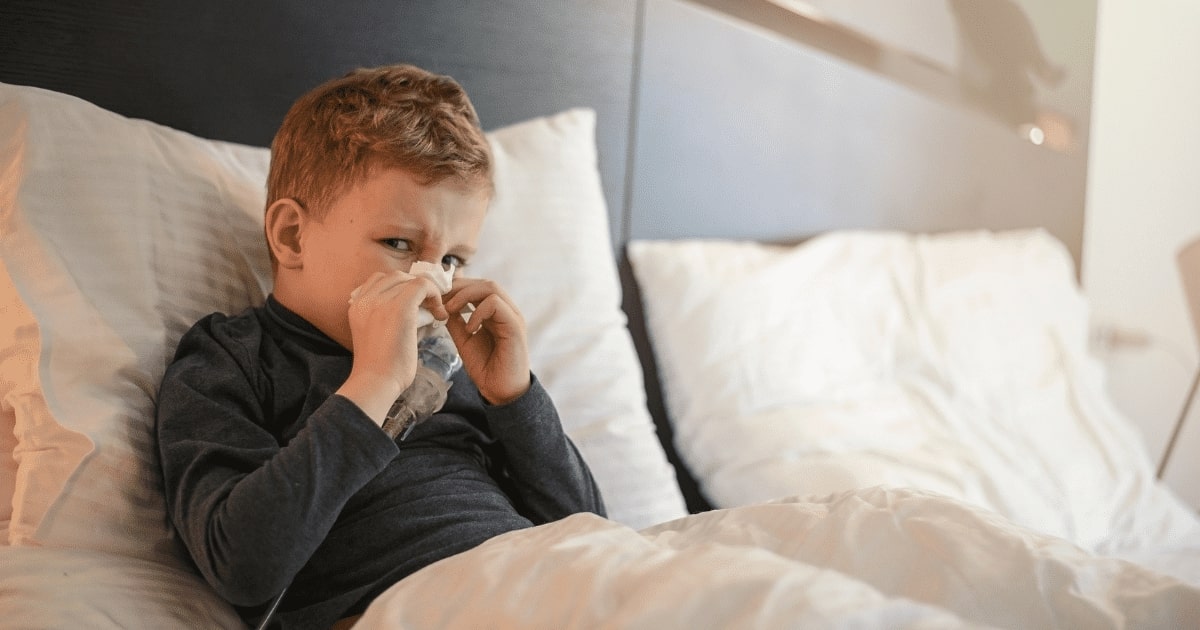One of the most widespread allergies, besides pollen allergy, is allergy to dust mites. Unfortunately, this type of allergy is not seasonal but troubles allergics throughout the whole year, especially during their stay at home. Dust mite allergy can make a person despise the place that is supposed to be the most pleasant for us - our bed.
Dust mites can trigger allergies in both children and adults, causing various symptoms and manifestations that affect many aspects of daily life. Understanding dust mite allergy symptoms in adults and kids is crucial, as these reactions can range from rashes, respiratory issues, to skin manifestations like dust mites allergy rash. Identifying the appearance of these microscopic organisms and the impact of humidity on their living conditions and reproduction is key to managing and mitigating their effects. This article delves into the nuances of dust mite allergies, exploring symptoms, manifestations, and offering advice on how to effectively handle these common allergens.

Where Do Dust Mites Come From and How to Detect Their Presence?
Unfortunately, dust mites are present in all households, even though they are not visible to the naked eye. The households with higher relative air humidity of over 50% usually have the most dust mites. These tiny creatures love moisture and darkness, so they are most commonly found in blankets, pillows, and especially mattresses. There, they are given daily food - they feed on the remnants of our skin.
Symptoms and Manifestations of Dust Mite Allergy
If you or someone in your family suffer from any of the following symptoms in the long term, then pay attention. Dust mite allergy can be the cause of these problems:
|
 |
Untreated Allergic Rhinitis Can Lead to Asthma

Untreated allergic rhinitis can lead to bronchial asthma. Worsening symptoms:
- difficulty breathing with possible chest pressure
- dry cough, wheezing
Tip: What helps with bronchial asthma? Find out in our article.
Dust Mite Allergy Can Cause Hives and Atopic Eczema
The symptoms of atopic eczema include red and itchy skin on the face, under the hair, and in the folds of the limbs (elbow and knee pits, wrists).
Tip: Read more in the next article about what helps with atopic eczema.
Dust Mite Allergies Impact Sleep Quality
It causes sleep disturbances, fatigue, inattention, and mood changes, affecting daily activities at work, school, and leisure time.
TIP: Hives: Allergic Rash and Its Symptoms, Causes, and Treatment
Mites - Allergy: Is a Particular Season More Significant for Dust Mite Allergies?
Allergies to dust mites are a year-round issue, but some periods tend to worsen their symptoms. Especially during early autumn when homes are less ventilated and more heated. Higher temperatures also improve conditions for mites to thrive.

How to Diagnose Dust Mite Allergies?
If you want to be sure whether you have a dust allergy, you can perform a home allergy test or visit an allergist. The diagnosis process at the doctor's office includes:
- A detailed analysis of symptoms, previous treatments, environment, and lifestyle.
- Skin tests - applying allergen extracts to the inner forearm to determine the allergen(s) causing the allergy.
- Possible blood tests to complement and confirm the diagnosis.
How to Get Rid of Dust Mites?
Dust mites live and breed in bedding, sheets, and mattresses. Each mattress can house several million dust mites. Studies have shown that after two years of use, regular pillows consist of 10% dust, where mites live. The allergen for humans is not the mite itself, but its excrement. Not a pleasant thought, right?
Article Tip: Effective Ways to Get Rid of Dust Mites in Bedding and Mattresses
Dust Mites Prefer Humid Air - Maintain Lower Air Humidity at Home
One of the most significant moments for dust mite allergy sufferers was in 1967 when Professor Reindert Voorhorst from University Hospital Leiden (now Leiden University Medical Center) and his colleagues discovered that dust mites were the main source of allergies in common household dust (Voorhorst et al. 1967). Over the next few years, scientists found that dust mites had a definite preference for humid and stuffy air. Therefore, dehumidifiers are essential for allergy sufferers.
On closer examination, it was found that the tiny bodies of mites consist of about 75% water, and their survival depends on maintaining a high water content. Mites, therefore, obtain water vapor from the air. A decade after Voorhorst's study, several studies conducted in mild climates across the United States showed a direct correlation between the humidity level in local homes and the number of mites. In other words, the moister the air in the house, the more mites were present.
Conversely, houses in drier climates had very few mites. As soon as the humidity increased in homes with lower humidity, the number of mites also increased.
Studies have shown that an average mite dies from dehydration in just five to eleven days if the relative humidity of its environment is maintained at 50% or less. Scientists also found that removing water from the environment works much better than several actively toxic pesticides.
Is Washing Effective in Mite Eradication?
You might think that regular washing and laundering at 60°C (140°F) will protect you. Unfortunately, it's not that simple. Although washing at higher temperatures will temporarily kill the mites, their bodies become food for another colony that will breed in your pillows and mattresses. It's a never-ending cycle. The presence of these tiny arachnids is a common feature in every household, and they float in the air everywhere. However, what you can influence is their quantity. How? Primarily through proper prevention.
How to Prevent Dust Mite Overpopulation?
The best option for allergy sufferers is prevention to avoid dust mite overpopulation. Ideally, follow these recommendations:
- Keep the bedroom clean.
- Regularly ventilate the space.
- Maintain a cooler environment - ideally around 18°C (64°F).
- Maintain lower air humidity below 50% using dehumidifiers.
- Use barrier beddings and barrier mattress covers with a nanofiber membrane.
- Avoid having carpets in the bedroom.
- Use an air purifier.
Czech Nanofibers Won't Let any Mites Through
Barrier covers and bedding with a nanofiber membrane, which is, by the way, a Czech invention, act as an excellent mechanical barrier for mites. They can significantly improve the sleep quality and overall life of allergy sufferers. Imagine the structure of the membrane as a very dense net that doesn't allow mites to pass through, preventing their multiplication. The advantage is that the bedding and covers still allow air circulation, making them very comfortable.
#produkty#https://www.nanospace.store/search/?string=mite+proof+bedding
You can either get special mattress covers and beddings and then use regular beddings on top. Covers are the most cost-effective solution and can remain functional for many years with proper maintenance. If you wash your regular blankets and pillows and cover them with barrier covers, you will reduce the concentration of mites in your surroundings.
Alternatively, you can invest in mite-proof duvets or pillows. NanoSPACE mite-proof duvets and pillows contain Czech nanofabric that prevents the accumulation and multiplication of mites and their allergens inside the bedding. This significantly reduces the number of mites and prevents the formation of dangerous colonies that cause allergic reactions.
Another option is nanoSPACE Nanocotton® bedding. It's a very pleasant cotton satin with nanofiber fabric inside, which also prevents mites and allergens from penetrating. The bedding's advantage lies in its durable fabric structure with a fine glossy surface and colorfastness even after numerous washes.
FAQ
What are dust mites, and how are they related to allergies?
Dust mites are tiny arachnids that often occur in households, especially in bedding, mattresses, carpets, and furniture. Allergies are triggered by mite excrement, which can cause symptoms like sneezing, itching, red eyes, stuffy nose, and more.
How can I reduce the number of dust mites in my home?
To reduce the number of dust mites, you can regularly vacuum, use mite-proof bedding and covers for allergy sufferers, maintain low humidity with the help of dehumidifiers and air purifiers for allergy sufferers.
How is dust mite allergy treated?
What is immunotherapy, and how does it help with dust mite allergies?
Immunotherapy (also known as allergy vaccination) is a long-term treatment that helps reduce the immune system's sensitivity to allergens such as dust mites. Immunotherapy can be administered through injections or sublingual tablets. This treatment must be carried out under medical supervision and can last for several years.
Can dust mite allergies cause a rash?
Yes, dust mite allergies can cause a rash or eczema in some people. If you suspect dust mite allergy and a rash, consult your doctor to recommend appropriate treatment.
Do dust mites live in hair?
Dust mites typically do not live in hair, but they can be found on the scalp or in bedding. Dust mite allergies can cause itching of the scalp in some individuals.
Learn More About Allergies:
- How to Recognize Allergies
- Dust Mite Allergies
- Feather Allergies
- Dust Allergies
- Allergy to Cats
- Allergy to Dogs
- Spring Pollen Allergies
- Identifying and Managing Allergies in Infants and Children
- Combined or Cross-Reactive Allergies
- How to Prepare for Allergy Season
Sources:
- Arlian LG, A. A. (n.d.). Lowering humidity in homes reduces dust mites and their allergens. J Allergy Clin Immunol, 99-104.
- Arlian LG, N. J.-M. (1999). Reducing relative humidity to control the house dust mite Dermatophagoides farinae. J Allergy Clin Immunol, 852-6.
- Ellingson AR, L. D. (1995). The prevalence of Dermatophagoides mite allergen in Colorado homes utilizing central evaporative coolers. Ann Allergy, 680-3.
- R Voorhorst, F. S. (1967). House dust mite atopy and the allergens it produces: identity with the house dust allergen. J Allergy, 325-329.
- RL Brandt, L. A. (1976). Mortality of house dust mites, Dermatophagoides farinae and D. pteronyssinus exposed to dehydrating conditions or selected pesticides. JMed Entomol, 327-352.
- Singh, M., & Jaiswal, N. (2013). Dehumidifiers for chronic asthma. Cochrane Database of Systematic Reviews, 1-25.
- Meltzer EO. Allergic rhinitis: burden of illness, quality of life, comorbidities, and control. Immunol Allergy Clin N Am. 2016;36(2):235–48.
- Kong DL, Qin Z, Shen H, et al. Association of obstructive sleep apnea with asthma: a meta-analysis. Sci Rep. 2017;7(1):4088.
- Kou W, Li X, Yao H, et al. Meta-analysis of the comorbidity rate of allergic rhinitis and asthma in Chinese children. Int J Pediatr Otorhinolaryngol. 2018;107:131–4.
- De Groot EP, Nijkamp A, Duiverman EJ, et al. Allergic rhinitis is associated with poor asthma control in children with asthma. Thorax. 2012;67(7):582–7.
- Pedro GB, Marcelo A, Priscila T, et al. United airway disease: current perspectives. J Asthma Allergy. 2016;9:93–100.
- Lun HK, Min BY, Chan KC, et al. Determinants for asthma control, quality of life and use of complementary and alternative medicine in asthmatic pediatric patients in four cities. World J Pediatr. 2018;14(5):482–91.
- Jung CG, Lee JH, Ban GY, et al. Prevalence and clinical characteristics of local allergic rhinitis to house dust mites. Yonsei Med J. 2017;58(5):1047–50.
- Nurmatov U, van Schayck CP, Hurwitz B, et al. House dust mite avoidance measures for perennial allergic rhinitis: an updated Cochrane systematic review. Allergy. 2012;67(2):158–65.
- Cheng L, Chen J, Fu Q, et al. Chinese Society of Allergy Guidelines for Diagnosis and Treatment of Allergic Rhinitis. Allergy Asthma Immunol Res. 2018;10(4):300-53.
- Sheehan WJ, Phipatanakul W. Indoor allergen exposure and asthma outcomes. Curr Opin Pediatr. 2016;28(6):772–7.

